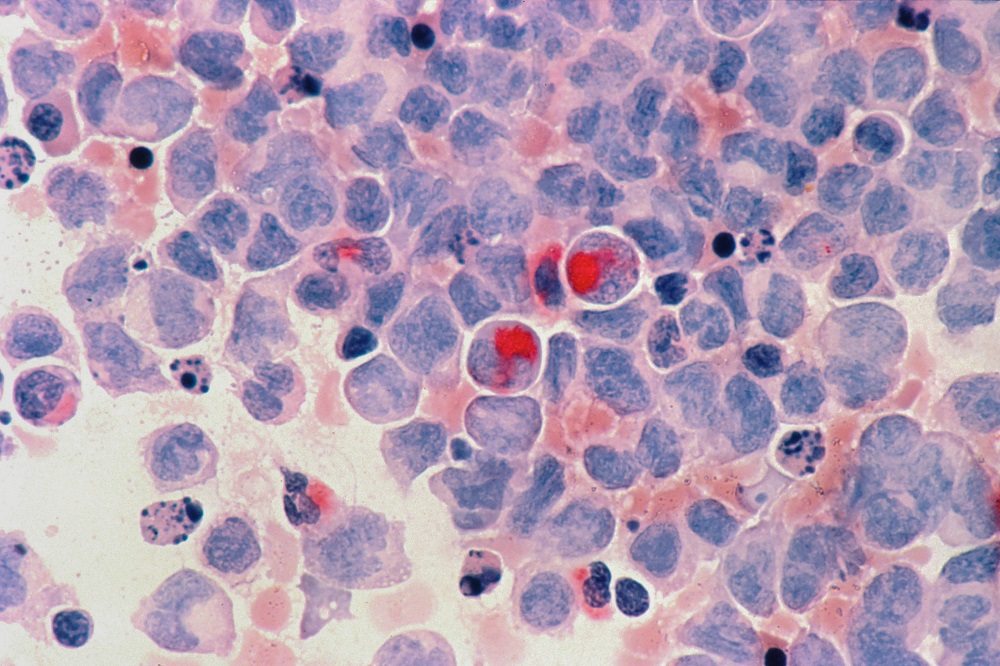Small lymphocytic lymphoma (SLL) is a cancer of the immune system. It affects infection-fighting white blood cells called B cells. SLL is a type of non-Hodgkin’s lymphoma, which along with chronic lymphocytic leukemia (CLL) indicates the same type of disease, treated the same way. Whereas in SLL, the cancer cells reside primarily in the lymph nodes (both B-type, in 90% of cases, and T-type), in CLL, most of the cancer cells are found in the blood and bone marrow.
In general, non-Hodgkin’s lymphomas, which constitute the largest group, can be classified as indolent or aggressive. Indolent lymphomas (such as the SLL and CLL types we will be discussing) develop slowly, may not cause symptoms, and usually respond well to treatment when it is needed. Aggressive lymphomas progress more rapidly and require more intensive treatments. However, recovery from the disease can often be achieved.
Symptoms of Small Lymphocytic Lymphoma
People with SLL may not have obvious signs for many years. Some may not even realize they have the disease. The main symptom of SLL is painless swelling of the neck, armpits, and groin. It is caused by cancer cells building up inside the lymph nodes.

Treatment of Small Lymphocytic Lymphoma
Immediate treatment does not necessarily affect everyone affected by Small Lymphocytic Lymphoma, as in the absence of symptoms, it is your doctor himself who advises you to wait and progressively evaluate the cancer without any treatment. Upon the occurrence of particular conditions, such as the spread of the tumor or in the presence of certain symptoms, treatment may be started. For example, if the lymphoma is located in a lymph node, radiation therapy is the preferred treatment. The radiation given out uses high-energy X-rays to kill the cancer cells. At a more advanced stage, doctors use chemotherapy drugs such as chlorambucil (Leukeran), fludarabine (Fludara) and bendamustine (Treanda). Sometimes chemotherapy is combined with a monoclonal antibody drug such as rituximab (Rituxan, MabThera) or obinutuzumab (Gazyva). These drugs cause the immune system to seek out and destroy cancer cells.
If the first treatment does not work or stops working, your doctor will repeat the same treatment or have you try a new drug. You can also ask your doctor to enroll you in a clinical trial. These trials test new drugs and combinations of drugs for SLL.
Want to learn more about Small Lymphocytic Lymphoma (SLL) treatments?
Click on our Search Tab to learn about the best recommended methods for treating Small Lymphocytic Lymphoma (SLL)
You may also like
Hearing loss: things to know before buying a hearing aid
Choosing a hearing aid isn’t easy, especially if you’ve never used one. They come in different shapes, colors and levels of technology.The first factor in determining which hearing aid to choose is your hearing loss, which could range from very mild to severe. Next, you need to know what you would like it to be… Continue reading Hearing loss: things to know before buying a hearing aid
Diabetes Type 2: Epidemiology and Prevention
Diabetes Epidemiology Diabetes is a very common disease. New updated data from the new International Diabetes Federation (IDF) Diabetes Atlas show that more than 34 million Americans have diabetes (1 in 10 individuals), of whom approximately 90-95% have type 2 diabetes. In UK the situation is slightly better: with nearly 4 million sufferers, about one… Continue reading Diabetes Type 2: Epidemiology and Prevention
Small Lymphocytic Lymphoma (SLL): Stats, Causes and Diagnosis
Small lymphocytic lymphoma (SLL) is a cancer of the immune system that affects the white blood cells that fight infection, called B cells. SLL is a type of non-Hodgkin’s lymphoma, as is chronic lymphocytic leukemia (CLL). Both cancers are basically the same disease, and are treated in almost the same way. The difference between the… Continue reading Small Lymphocytic Lymphoma (SLL): Stats, Causes and Diagnosis
Diabetes: Diagnosis and Types
Diabetes mellitus is a chronic metabolic disorder that affects our body’s energy processes. Following the daily intake of food, a good portion of the nutrients are broken down into sugars (glucose), which are then transferred to the blood vessels. When the level of sugars (blood glucose) exceeds threshold levels, the pancreas kicks in. It releases… Continue reading Diabetes: Diagnosis and Types
